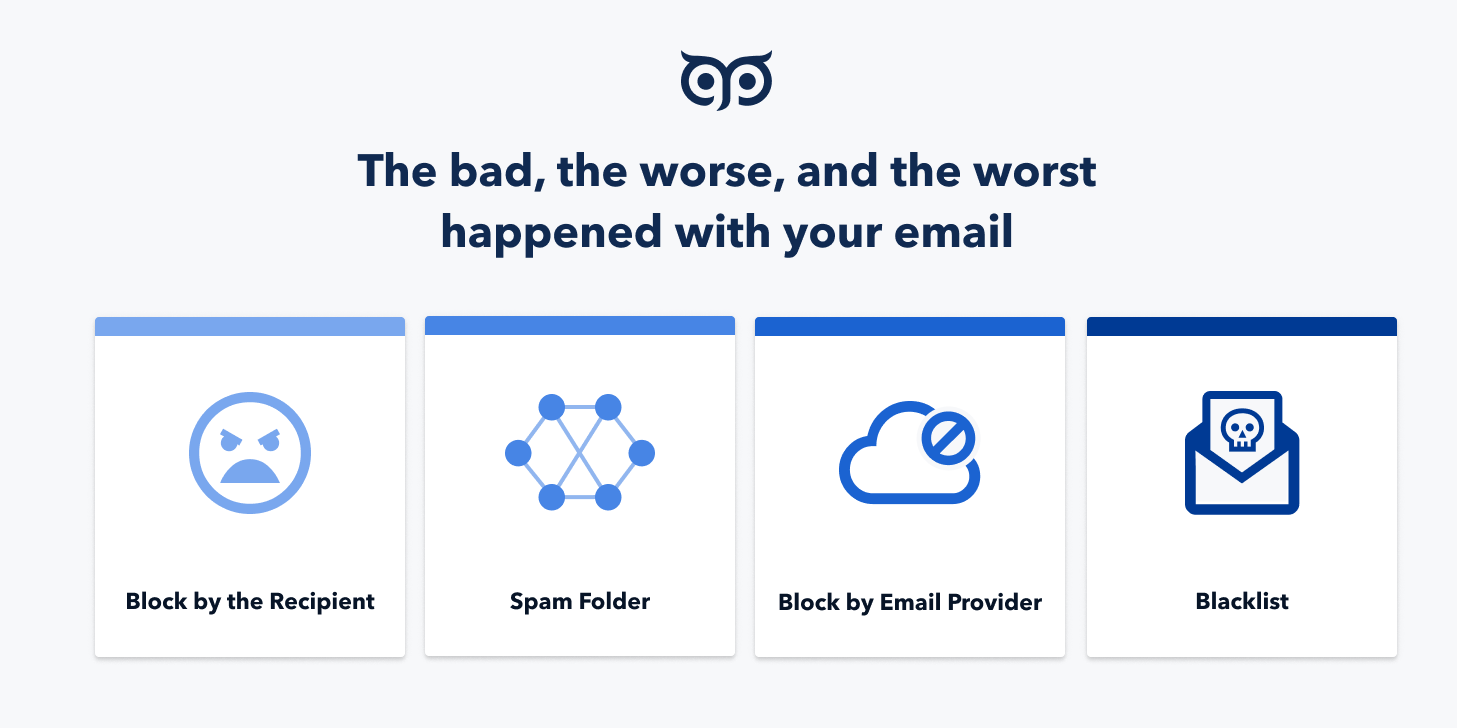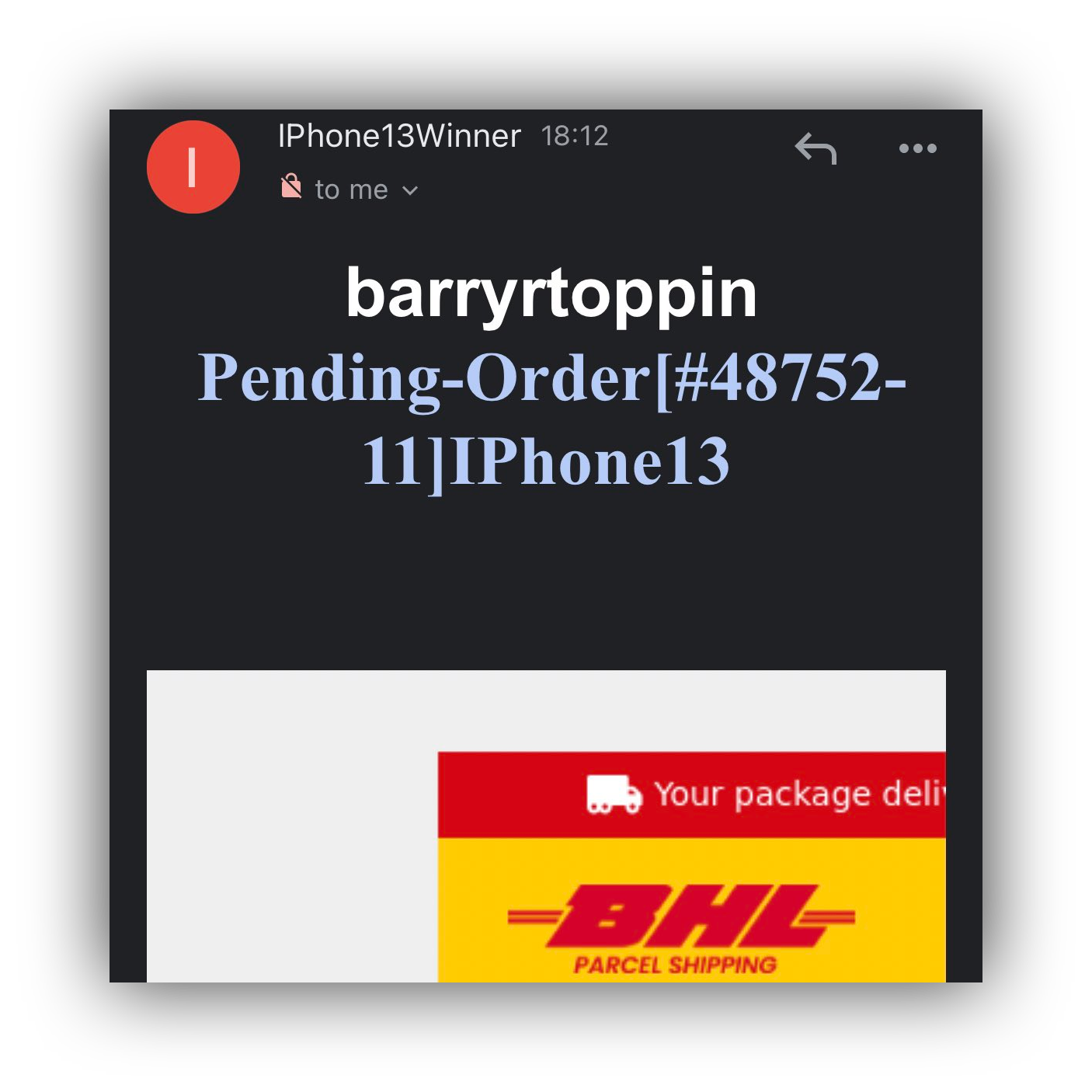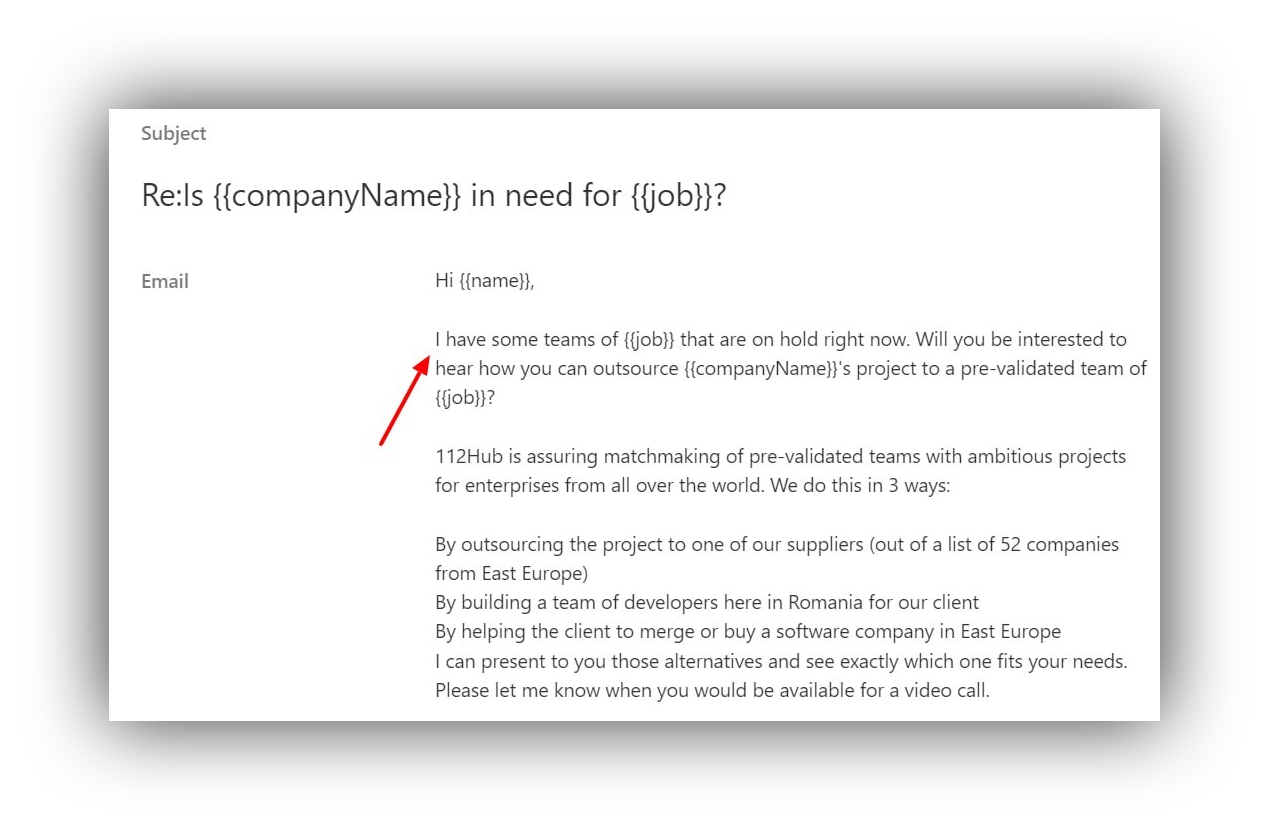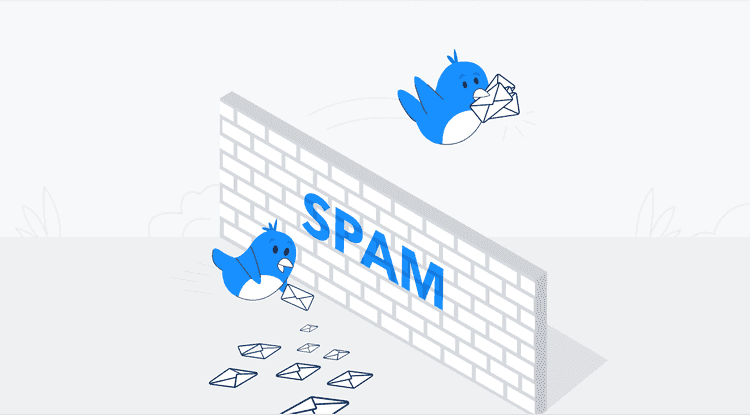People and email providers are used to specific patterns of spammers or scammers. Among the patterns are the certain look of subject lines and emails as well as attempts to reach as many people as possible. That is why even if you are an honest sender, you should avoid the attributes of spamming behavior.
Often email account gets blocked after sending cold emails with mediocre and even good content just because they used the wrong word or added a link from a suspicious domain.
There is a stereotype that cold bulk emails equal spam and will be immediately blacklisted. Now, we are here to explain how to reach necessary volumes while avoiding spam folders.

Why would an email be blocked, blacklisted, or filtered as spam
Email is blocked due to:
- Technical issues or because you have a high bounce rate
- A significant share of spam complaints and unsubscribes
- A very low open rate
- Recipients may block email if they don’t like the message or don’t find the unsubscribe option.
Your domain or IP is blacklisted because you have a weak domain or IP reputation, and your email behavior is considered spam-like by email providers.
Your mass email in Gmail and other providers hits the spam if your recipients complain about it, your content activates spam algorithms, or you didn’t set up your account correctly.
How to know if your email is blocked, blacklisted, or filtered as spam
To understand that someone blocked you:
- Send emails to your list
- Go through the stats of hard bounces
- Check the details of the bounces
Also, your email account gets blocked after sending cold emails by your mailing tool. In this case, ESP will suspend your account. You won’t be able to send an email.
To understand if you are blacklisted:
- Go to MXtoolbox website
- Choose blacklists section
- Enter your domain
- Push «Blacklist Check» button
How to know if you are filtered as spam:
- Your message will bounce back as spam
- You will see user complaints in your mailing tool analytics
Cold bulk email vs spam
Both types of emails are the same messages sent to many addresses to people who don’t expect them. Spam emails are often illegal and irrelevant to the recipients. Cold emails are carefully segmented bulk emails without spamming and most likely are valuable to the reader.
Spam examples :)
.png)

Cold email example 👍

How to send bulk email without spamming
The goal of Gmail and other ESPs is to let only valuable messages to the primary inbox of their users. The crucial point in sending bulk email in Gmail without getting blocked is that your message should feel like you are sending it to only one person.
- Ensure your lead list has only valid emails
- Recheck your authentication settings
- Start with warming up and make it part of your routine
- Use multiple accounts
- Have an unsubscribe option
- Polish email content
- Segment your list for personalization
- Motivate opens and responses
- Track the email campaign data
- Test and revise senders’ best practices
- Сhoose safe bulk email software
Ensure your lead list has only valid emails
Your email list may have invalid addresses. Emails sent to deleted or fake accounts will be returned to you. It is one of the most popular hard bounce causes.
If you have a lot of inactive accounts on your list, you will have a high bounce rate, and it may be the reason why email account get blocked.
Always verify your contacts list right before the campaign, even if you verified it with the bulk email verifier before. Your emails may have changed validity status if you found them a week or a month ago.
If you are using GetProspect, your list is automatically updated.
Verify your prospects contacts to make sure they wont bounce
ValidateRecheck your authentication settings
To send bulk emails without spamming, you should be a verified user. It is like having a driving license. You can drive without one, it is quite risky though.
SPF (Sender Policy Framework), DKIM (Domain Key Identified Mail), and DMARC (Domain-based Message Authentication, Reporting & Conformance) are email authentication methods where you make a record before launching the first email campaign. Email providers use it to understand you aren’t a spammer.
Start with warming up and make it part of the routine
Each new email account should be warmed up because, at this stage, you haven’t built a reputation yet. The procedure is vital for sending bulk email in Gmail without getting blocked. Email providers protect themselves and their users from dubious spikes of emails.
The objective of the warming-up process is to initiate communication with your account to have a good open and reply rate. It means you send emails and get opens and replies. You can use warm-up tools and involve your friends, family, and colleagues.
It takes around 8-12 weeks to build a good reputation. Further warming up is necessary for maintaining reputation and credibility.
Use multiple accounts
Generally, when you send a bulk email for free, it is safe to mail around 100 emails daily (cold, follow-ups, communication with colleagues — all emails). In GetProspect, our sales team sends up to 50 emails from 1 account. If you are making a mass email campaign, 100 per day isn’t enough.
By using several email addresses, you can mail 2x, 3x, and 4x more. Create different top-level domains (com, co) and variations of your name — max@getprospect.com, maksim@getprospect.com, maksim.g@getprospect.com.
Have an unsubscribe option
If prospects don’t find how to unsubscribe from your mass email in Gmail, they may block you or mark the message as spam.
Usually, senders add an unsubscribe link to the email body. At the same time, there is a better alternative. You can ask the recipient to reply «Unsubscribe» to your message. When you send personal emails, you don’t include an unsubscribe link. So the message without an unsubscribe link will look more natural, what email providers like.
Moreover, having responses from unsubscription will boost your reply rate and consequently improve your reputation to send bulk emails without spamming.
You can also go further and offer them several unsubscribe options so that you won’t lose the lead completely. For instance, suggest them to receive only particular types of emails or send fewer emails in general.
Polish email content
- Wording. Choose original synonyms and avoid spammy words (such as — free, sale, deal, promise, click here). The list of spam words is regularly updated and published by major email providers such as Active Campaign or Hubspot.
- Links. To send bulk emails without spamming, cut the number of links to a necessary minimum, check that the domain you link isn’t blacklisted, don’t use popular link shorteners, and be careful with tracking links.
- Attachments, message size. Heavy messages aren’t considered reliable by email providers. For example, Gmail bounces back emails that are > 25 MB. To avoid bounces and technical errors, choose plain text instead of over-designed text and place necessary docs, presentations, and images in the cloud.
Segment your list for personalization
The best way to send a bulk email is to mail relevant messages. Otherwise, prospects may move you to spam or block you without much thinking.
At the same time, you won’t manually personalize each of the 200 emails. Here is where you will need segments — the groups of people with a common characteristic. For example, companies that just hired a new CMO, raised a series A round, and are using Hotjar on their website. It should be facts relevant both to them and to what you are talking about in the email.
With segments, you create slightly different emails to each group of prospects.
Motivate opens and responses
Whatever campaign you launch, an open rate is necessary to send emails without getting blocked. That is why senders pay special attention to their subject lines. Popular types of email titles regularly become outdated and considered spam. You should always strive to balance being catchy and looking like a typical email from another real person. Here you can find advice and inspiration on email subject lines.
The same is true about the reply rate — it is important for your business email reputation. Even if leads don’t like what you are offering, mention that any answer will be OK for you, you just want to stay relevant to your recipients.
Track the email campaign data
Monitoring your mass email in Gmail results helps to respond to unexpected negative numbers faster.
Deciding on mailing software, think about your email campaign needs and what might be relevant to track, how detailed your analytics should be. Some email providers have quite simple data — opens, bounces, spam complaints, and it will be difficult to collect aggregated numbers.
Test and revise senders’ best practices
All the email «rules» and the best way to send a bulk email without getting blacklisted are figured out with testing and experimenting. Gmail doesn’t tell what the exact algorithms they use are. If it is the case, it will be easier to bypass the rules for the fraudulent senders.
In the article, we offer general tips. We recommend reading email reports and your industry experts’ experience, testing yourself, and refining email tactics for your case.
Сhoose safe bulk email software
Software choice also impacts your deliverability and sending bulk email in Gmail without getting blocked.
-
Know your email goals and needs. There are different services for cold emails and newsletters. With the former, your emails are technically sent through your email account, and with the latter, your emails are sent via email provider infrastructure.
Newsletter bulk email services are often filtered as Promotion and collected in the corresponding folder. You don’t want your cold email getting into the Promotion folder.
-
Choose reliable providers. Check the Google «top», and read reviews. Don’t skimp. Seriously, you may spend even more resources because of an unsuccessful mass email in Gmail: your domain may be blacklisted, or you lose your carefully built database. Additionally, you probably care about your reputation, which will be damaged if subscribers find your emails in a Spam folder.
Summary
- You may have good content and still be blocked, blacklisted, or marked as spam
- Cold mass email in Gmail won’t go to spam if you choose the right tools, verify and warm up your account, have an unsubscribe link or question, watch for spam words and email size, segment your recipients
- There is no documented set of «email rules». Email providers don’t uncover how their algorithms work. So people learn new and specific rules through experiments


